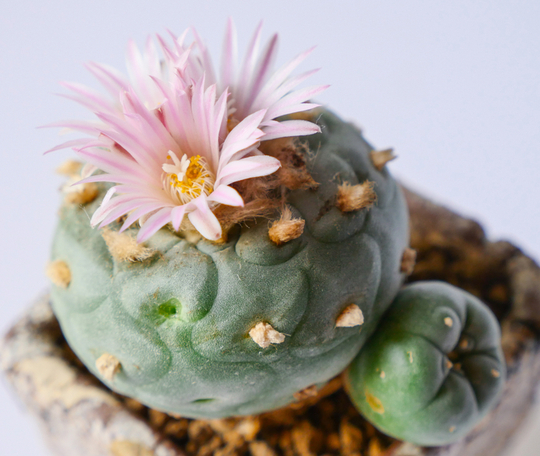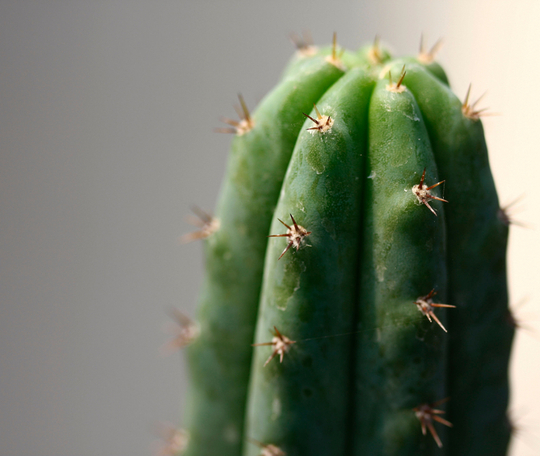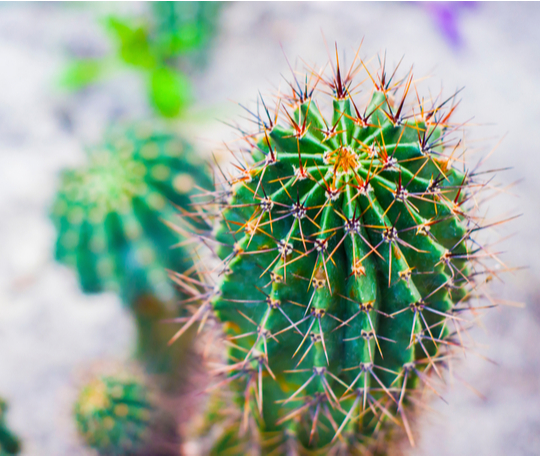PHARMACOLOGY PROFILES
Mescaline
3,4,5-trimethoxyphenethylamine
C11H17NO3
Drug Classification
Phenethylamine
Common Names
Peyote, San Pedro, Buttons
Binomial Nomenclature
Lophophora williamsii (peyote), Echinopsis pachanoi (San Pedro), Echinopsis peruviana (Peruvian Torch cactus), Cactacae plant and Fabacae bean families.

Lophophora williamsii (peyote)

Echinopsis pachanoi (San Pedro)

Echinopsis peruviana
Overview
Mescaline is the parent compound of the phenethylamine family. It is one of the oldest known
naturally occurring psychedelic substances and can be found in the San Pedro (Echinopsis pachanoi)
and peyote (Lophophora williamsii) cacti. The ceremonial and ritual uses of these cacti date back
thousands of years and originate from native tribes in Texas and New Mexico, including the Tonkawa
and Mescalero tribes, among several others. Though these cacti are commonly used for spiritual
enlightenment and ritualistic purposes, peyote in particular has been used by the Rarámuri peoples
as a topical treatment for wounds and in long-distance endurance foot races.
Mescaline was first isolated in 1897 by Arthur Heffter and synthesized in 1919 by Ernst Späth. In
1953, famous author Aldous Huxley experimented with mescaline for the first time. Feeling compelled
to share his experience, he wrote The Doors of Perception, which was the inspiration behind the name
of the famous rock band The Doors. Mescaline has influenced the work of other authors as well, such
as Hunter S. Thompson and Carlos Castaneda. The substance is also an important part of chemist
Alexander Shulgin’s work. Shulgin used mescaline as a base compound for dozens of synthesized
psychedelic phenethylamines. It is even included in his self-rated list of the most important
psychedelic phenethylamines— the “magical half-dozen.”
Today, peyote and San Pedro cacti are still primarily used by Mexicans and South Americans. Under the
American Indian Religious Freedom Act, peyote ceremonies remain legal in the US. In traditional
ceremonies and rituals the “buttons” or “crowns” of peyote are cut from the root, dried, and either
chewed on or brewed into a tea. Most traditional ceremonies take place in the Native American Church
and are often used to treat alcohol and drug addiction. This is especially important among Native
American tribes, as the alcoholism rate among them is more than twice the US national average.
Due to the slow-growing nature of peyote, it is considered an endangered species. The San Pedro
cactus, unlike peyote, grows rapidly and self-cultivation is much easier, so it is not considered
endangered. This cactus is native to the Andes mountains in South America and has been used by
different indigenous cultures for thousands of years. It can be consumed by itself or in conjunction
with other plants in a brew known as “cimora”. As a decorative cactus alone, San Pedro is perfectly
legal to grow in the US; but once cultivated for psychedelic use, the cactus is considered illegal.
Through sustainability and preservation, mescaline can continue to have a strong cultural presence
for thousands of more years to come.
Though pure mescaline has not been proven to be toxic or addictive, it is highly recommended to use
harm reduction practices if using this substance.
Dose and Duration
Mescaline doses range from light and moderate to strong and heavy.
- Light: 50 – 200 mg
- Moderate: 200 – 500 mg
- Strong: 500 – 800 mg
- Heavy: 800 mg+
The entire duration of a mescaline trip can last between 8 to 14 hours. The peak is about 4 to 6
hours and the after effects can last up to 36 hours post-trip.
Effects
Mescaline is the parent compound of the phenethylamine class, which are the molecules based on the
phenethylamine structure. This is different from the tryptamine class, which includes psychedelics
like psilocybin and DMT.
Mescaline binds to and activates serotonin receptors 1A and 2A/B/C. The psychedelic effects of
mescaline are most likely produced by its activation of the 2A receptors. It also binds to dopamine
receptors and acts either as an agonist or selective reuptake inhibitor, much like the way
antidepressants do.
Experience
Each users’ experience with mescaline is different and depends on a number of factors, from set and
setting to dose and method of consumption. But that does not mean there are not objective
commonalities between these subjective experiences. For example, some of the most common
experiential reports from users include intense internal and external hallucinations and deep
self-reflection. Some individuals also report that mescaline creates an empathetic feeling, much
like MDMA, that aids in self-exploration and spiritual healing.
Other shared experiences include:
- Spontaneous Sensations of the Body
- Enhanced Colors
- Synesthesia (Mixing of Senses)
- Multicolor Geometric Patterns
- Distortion of Time
- Sense of Interconnectedness
- Ego Death
Benefits
Cacti that contain mescaline were originally used as plant medicines to treat snake bites, skin
conditions, and general pain. More recently, these plants have been used in the traditional Native
American Church to treat a wide range of conditions, whether they be psychological, spiritual, or
physiological. The substance has also been known to help treat anxiety, PTSD, and addiction.
Though research on mescaline’s psychotherapeutic benefits is novel, studies suggest that the
substance may increase blood flow and activity in the prefrontal cortex – which is the area of the
brain responsible for planning, problem solving, emotions, and behavior. Reports of low activity in
the prefrontal cortex is linked to depression and anxiety, but researchers are confident that
mescaline could ease symptoms of such disorders and others alike.
Mescaline is also known to have an intense “afterglow,” the positive physical and mental effects that
linger after the effects of a substance have subsided, which can last up to 6 weeks post-ceremony.
During the afterglow stage, users are happier and less likely to relapse. This effect also plays a
significant role in treating anxiety and depression. In 2013, a study found that lifetime mescaline
use was linked to a reduced rate of agoraphobia, an anxiety disorder that causes intense feelings of
panic and fear.
Risks
Pure mescaline and mescaline containing cacti are generally considered safe, though research into
their potential harm is limited. To date, a lethal dose has not been reported. It should be avoided
by anyone with a heart condition, pregnant or breastfeeding woman, and those with pre-existing
mental health conditions, such as bipolar disorder or schizophrenia.